Bass fishing isn’t merely a hobby; it’s an art form, a science, and a passion that runs deep among anglers worldwide. Whether you’re a seasoned pro or just starting, understanding how professionals fish for bass can unlock the secrets to reeling in those prized catches. From equipment selection to strategic techniques, let’s dive into the world of bass fishing and explore the tactics employed by the experts.
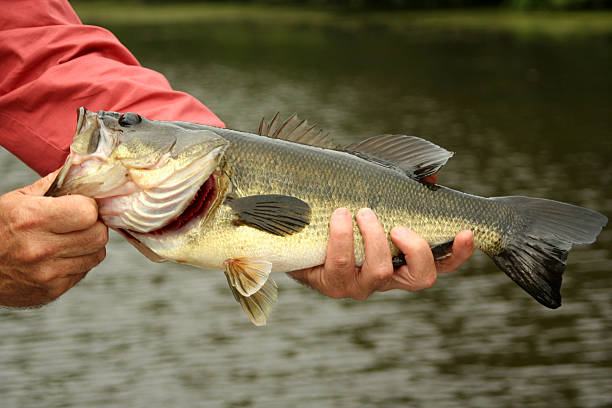
Choosing the Right Equipment:
Professional bass anglers know that selecting the right equipment is paramount to success on the water. Each piece plays a crucial role in the angling experience, from rods and reels to lures and lines. Here’s a breakdown of what the pros typically use:
Rods and Reels:
Selecting suitable rods and reels is essential for successful bass fishing, as they significantly impact an angler’s performance on the water. Medium to medium-heavy action rods balance sensitivity and power, making them versatile across various bass fishing techniques. Their length, typically ranging from 6’6″ to 7’6″, enables optimal casting distance and control, crucial for navigating diverse fishing environments and handling the fight of strong bass.
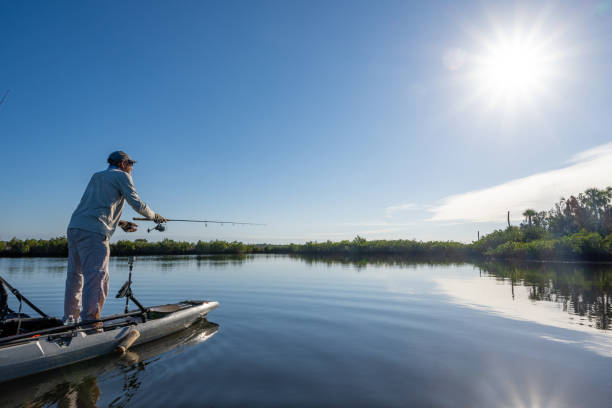
Baitcasting reels are the preferred choice among bass anglers, particularly professionals, due to their superior casting accuracy and control. These reels allow anglers to position their lures precisely in tight spots and cover more water efficiently. With the ability to adjust spool tension and braking systems, anglers can fine-tune their casts for different lure weights and fishing conditions. Additionally, the durability and quality construction of rods and reels, featuring materials like graphite or carbon fiber for rods and corrosion-resistant components for reels, ensure longevity and performance in demanding fishing environments. While investing in high-quality gear may require a slightly higher upfront cost, their reliability and functionality make them indispensable assets for serious bass anglers seeking to elevate their fishing experience.
Lines:
Selecting the right fishing line is critical for bass anglers aiming for success on the water. Among the various options available, the fluorocarbon fishing line is a popular choice for many professionals and recreational anglers. Fluorocarbon line offers several advantages, including low visibility underwater, which can be crucial when targeting wary bass in clear water conditions. Its refractive index closely matches that of water, making it nearly invisible to fish, giving anglers a stealthy advantage. Additionally, fluorocarbon lines have low stretch properties, providing enhanced sensitivity to detect even the subtlest of bites and allowing anglers to react quickly and precisely set the hook.
Alternatively, some bass anglers prefer a braided fishing line for its unmatched strength and durability. A braided line combines multiple synthetic fibers, creating a highly robust and abrasion-resistant line. This makes it ideal for fishing in heavy cover, where bass often lurk around submerged vegetation, rocks, and fallen trees. The thin diameter of the braided line allows for increased line capacity on reels, enabling anglers to make long casts and easily handle powerful hooksets. Additionally, the braided line has minimal stretch, providing superior sensitivity to feel every nibble and subtle movement, ensuring a higher hookup ratio when targeting elusive bass.
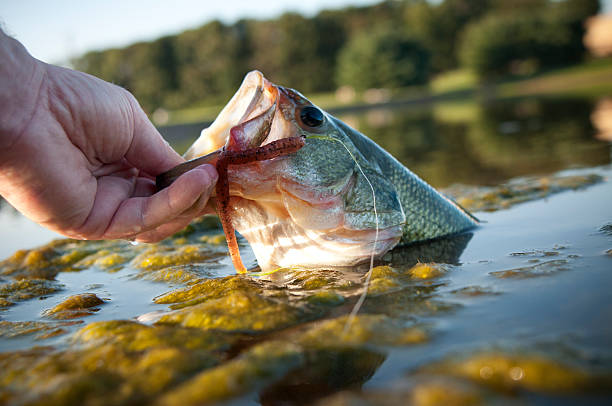
Lures and Baits
Selecting the best lure or bait for bass fishing often depends on various factors, including water conditions, time of year, and the behavior of the bass. One of the most versatile and effective lures for bass fishing is the soft plastic worm. Available in many sizes, shapes, and colors, soft plastic worms mimic the natural movement of prey, enticing bass to strike. Rigging options such as Texas rigs, Carolina rigs, and wacky rigs offer anglers flexibility in presenting the worm at different depths and in various types of cover. Whether fishing in shallow flats or deep drop-offs, soft plastic worms remain a staple in every bass angler’s tackle box due to their consistent ability to produce bites.
Another popular lure choice among bass anglers is the crankbait. Crankbaits come in a range of designs, including shallow-diving, medium-diving, and deep-diving models, allowing anglers to target bass across different depths of the water column. The realistic swimming action and rattling sounds emitted by crankbaits mimic injured baitfish, triggering aggressive strikes from predatory bass. By varying retrieval speeds and experimenting with diving depths, anglers can effectively cover large water areas and locate actively feeding bass. Crankbaits excel in open water and around submerged structures such as rocks, stumps, and ledges, making them a go-to lure for novice and experienced bass anglers seeking action-packed fishing experiences.
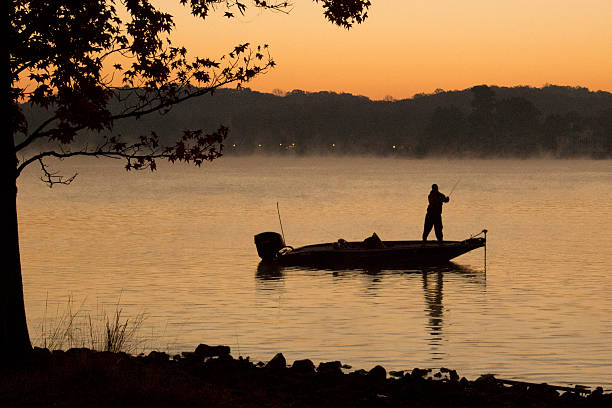
Strategic Techniques:
Successful bass fishing goes beyond casting a line and hoping for a bite. It involves understanding the behavior of bass and their habitat and employing strategic techniques to entice strikes. Here are some tactics used by professionals:
1. Location:
Professionals rely on technology and instinct honed through years of experience to decipher the best bass location beneath the water’s surface. Fish finders equipped with advanced sonar capabilities provide real-time imagery of underwater structures and schools of fish, allowing anglers to pinpoint potential hotspots precisely. By interpreting sonar readings and recognizing characteristic shapes and movements, seasoned anglers can distinguish between baitfish schools and lurking bass, optimizing their chances of a successful catch.
One prime location often favored by bass anglers is near underwater structures such as submerged rocks, fallen trees, and dense vegetation. These structures provide bass with cover and ambush points to prey on passing baitfish and other forage. Anglers target these areas by casting their lures close to the structure and enticing bass to strike by mimicking natural prey movements. Points where structures intersect, creating edges and drop-offs, are particularly productive as they offer bass multiple ambush points and access to deeper water.
Another location for bass fishing in lakes is around areas of fluctuating water depth, such as creek channels, ledges, and underwater humps. Bass often use these depth changes as travel corridors and feeding zones, especially during different times of the day or under varying weather conditions. Anglers strategically position themselves along these depth transitions, presenting their lures where bass are likely to congregate and feed. By leveraging the natural topography of the lake, anglers can intercept bass as they move between shallow and deep water, maximizing their chances of landing trophy-sized catches. Understanding the interplay between structure, depth, and bass behavior is critical to unlocking the secrets of productive fishing locations in lakes and experiencing memorable angling adventures.
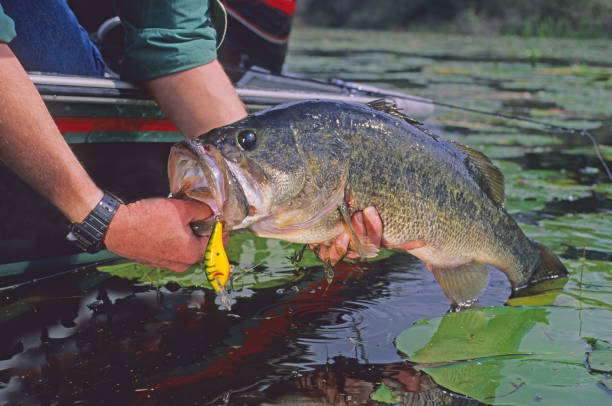
2. Presentation:
This is another skill among professional bass anglers, who understand that the subtleties of lure movement can be the deciding factor between a strike and a missed opportunity. Experimentation is key as professionals adjust retrieval speeds, incorporate strategic pauses, and impart subtle twitches to their lures, striving to replicate the erratic movements of natural prey. By emulating the behavior of injured baitfish or distressed prey, anglers provoke instinctual responses from bass, enticing them to strike with ferocity. This finesse in presentation isn’t solely about mimicry but about creating an illusion that triggers the predatory instincts deeply ingrained within bass.
The presentation extends beyond mere manipulation of the lure; it encompasses a holistic understanding of the aquatic environment and its nuances. Professionals analyze water clarity, temperature, and current dynamics to tailor their presentation techniques accordingly. They adapt their casting angles and lure depths to match the specific conditions of each fishing scenario, ensuring that their presentation is both precise and enticing to the bass. By harmonizing the intricacies of presentation with environmental variables, professional anglers elevate their chances of success, consistently enticing bass to strike and securing their status as masters of the sport.

3. Adaptability:
Professionals understand that no two days on the water are ever the same. They embrace the dynamic nature of the sport, recognizing that factors, including weather patterns, water clarity, and seasonal transitions, can influence bass behavior. As conditions shift, so too must the strategies employed by anglers, who remain poised to pivot at a moment’s notice. This readiness to adapt manifests in a willingness to experiment with new techniques, whether deploying unconventional lure presentations or exploring uncharted fishing grounds in pursuit of elusive bass.
In the face of adversity, adaptability emerges as a defining trait among professional bass anglers, who view challenges as opportunities for growth and innovation. When traditional approaches yield lackluster results, they refuse to be deterred, instead embracing the challenge with tenacity and resourcefulness. Whether it entails deciphering subtle changes in bass behavior or improvising makeshift rigs to overcome unforeseen obstacles, professionals approach each fishing excursion as a dynamic puzzle waiting to be solved. By embracing adaptability as a guiding principle, they enhance their chances of success and deepen their understanding of the intricate relationship between angler and bass, perpetuating a legacy of excellence in pursuing the ultimate catch.
The patience and persistence required when fishing bass is necessary, and this often separates casual anglers from seasoned professionals. In the serene expanse of lakes and rivers, time takes on a different dimension, and success often hinges on one’s ability to endure the quiet moments between bites. For professionals, slow days on the water are not cause for discouragement but opportunities for introspection and refinement. They understand that pursuing trophy bass demands unwavering dedication and a steadfast commitment to the craft.
In the face of uncertainty, professionals summon reserves of patience that border on the sublime, maintaining a stoic resolve even when the odds seem stacked against them. They recognize that each cast is an investment in possibility, an act of faith in the unseen realm beneath the water’s surface. With each passing moment, they remain vigilant, attuned to the subtle rhythms of nature and the ebb and flow of bass activity. Through patience and persistence, professionals transcend the realm of mere angling, forging a profound connection with the aquatic world and the elusive creatures that inhabit it.
Conclusion:
Fishing for bass at a professional level is a multifaceted endeavor that combines skill, knowledge, and a deep passion for the sport. By understanding the equipment, employing strategic techniques, and embracing patience and persistence, anglers can elevate their bass fishing game to new heights. Whether casting from the shore of a local pond or competing in tournaments, mastering the art of bass fishing is a rewarding journey that continues to captivate anglers worldwide.
